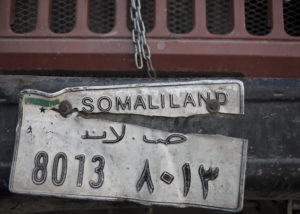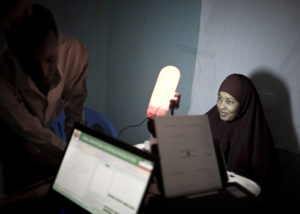
In contrast to south and central Somalia, the self-declared Republic of Somaliland in the northwest has enjoyed relative stability. Somaliland declared independence in May 1991, with a rebuilt Hargeisa as its capital. Although its sovereignty remains unrecognized by the international community, the people of Somaliland have undertaken to build a functioning parliamentary democracy.
In 1991, Barre was driven out of the southern capital of Mogadishu, effectively marking the end of military rule. That same year, the Isaaq-majority Somali National Movement (SNM) called a conference of clan elders in Burao, ending hostilities in the northwest, establishing a framework for peaceful coexistence between the Isaaq, Dir, and Darod clans in the region, and declaring independence from the south.
This initial peace was shattered by fighting between rival SNM factions in the towns of Burao and Berbera in 1992. Hundreds of women demonstrated for peace, at times putting themselves between the fighters, donning white mourning scarves, marching, and singing. By 1993, elders from the major clans and subclans met at Boroma for the historic Grand Conference of National Reconciliation, and, after four months of negotiations, adopted a transitional national charter which served as a temporary constitution. Among the achievements of the conference at Boroma was the creation of a blueprint for a parliament comprising two houses: a non-elected house of clan elders and an elected house of representatives. The Republic was thus established on the relatively strong local community structures that had been a continuous presence in the region since the days of British rule. (See I.M. Lewis, A Modern History of the Somali, 4th ed. Ohio University Press, Athens 2002; Judith Gardner, Judy L. Bushra, Somalia – The Untold Story: The War through the Eyes of Somali Women. Pluto Press, London (2004)).

Today Somaliland has a defined—though contested—territory, an elected government that provides some services to its people, a civilian police force and professional army, and its own currency and license plates. Although lack of international recognition remains an acute problem, in all practical respects it is a functioning sovereign state.
Somaliland’s relatively peaceful transition carries with it painful reminders of the devastation suffered under the Barre regime. In the late 1990s, flooding unearthed evidence of mass graves in and around Hargeisa, leading to cries for accountability and the establishment of a government War Crimes Investigation Commission.